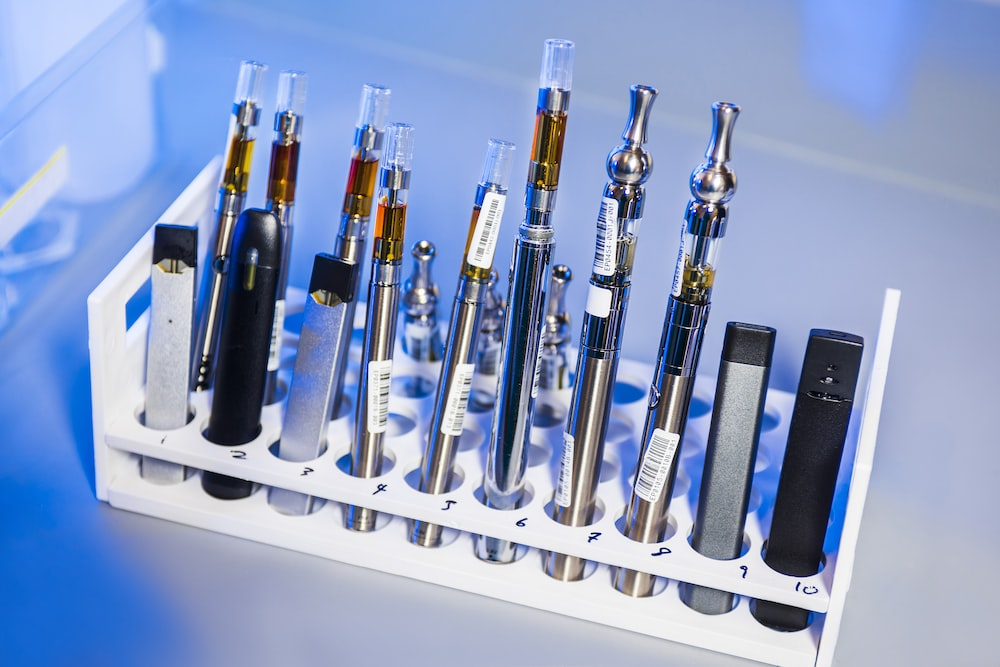Our article “Unveiling the Future” navigated the nebulous world of vaping and e-cigarettes, charting their rise from niche novelties to global phenomena. We explored the health debates, pored over the regulatory hurdles, and examined the technological advances that powered this industry. But we left one question hanging in the air: what’s next?
This is where we pick up the scent. The future of vaping and e-cigarettes is no longer shrouded in mystery but instead veiled by the fog of innovation and change. This article will guide you through this swirling mist, illuminating the path the industry is forging.
Brace yourself for an exhilarating journey into the uncharted territories of next-gen technologies, evolving regulations, emerging markets, and transformative health research in the realm of vaping. Are you ready to take a bold puff into the future?
Catching the Vapor Wave: Unmasking the Popularity Surge in Vaping
Here are vital stats you need to know about the usage of e-cigarettes:
- Last year, a staggering 2.55 million middle and high school students across America reported using e-cigarettes within the past month. This figure encompassed 3.3% of all middle schoolers and 14.1% of all high schoolers. Meanwhile, in the adult population, the use of e-cigarettes held steady, with 4.5% of U.S. adults admitting to regular use in 2021. (CDC.GOV)
- In the e-cigarette-using adult population, it’s interesting to note that those who have never touched a traditional cigarette are predominantly in the 18-24 age bracket, making up 56.0% of this group. This trend takes a dip as the age groups ascend, showing fewer non-smoking e-cigarette users in the older demographics. (CDC.GOV)
- Looking at various groups differentiated by sex, race/ethnicity, and education, we find that most people who vape are current or ex-smokers. However, the age factor adds an interesting twist. Of those who vape but have never smoked traditional cigarettes, a sizable 63.4% (with a 95% confidence interval of 58.2%-68.7%) are in the 18-24 year age group. Another notable chunk, 23.8% (95% CI, 19.6%-28.1%), falls within the 25-34 year age bracket. (jamanetwork.com)
Regulatory Landscape
As we explore the cloud of vaping, it’s crucial to understand the rules of the game. Our next section will dissect the global regulatory landscape governing e-cigarettes and vaping.
We’ll explore the current policies in place, their influence on the industry, and the ripples they’ve created. But regulations, like the industry they oversee, aren’t static.
Anticipating the shifts on the horizon, we’ll also speculate about potential changes to these rules and the ensuing impact on the vaping world. Buckle up as we navigate these legal intricacies, shedding light on the unseen forces shaping the future of vaping.
A. Discussion of the Current Global Regulatory Environment
Across the globe, the regulatory environment surrounding e-cigarettes and vaping varies widely. In some regions like the European Union, regulation is relatively strict, with limits set on nicotine content, advertising, and packaging.
Conversely, some countries like the U.K. view e-cigarettes as a means to quit smoking and hence, have more lenient regulations. However, in countries like Brazil and India, e-cigarettes are completely banned.
This broad spectrum of regulations reflects the global uncertainty surrounding vaping and its long-term health effects.
B. Impact of Changing Regulations on the Vaping Industry
Regulations have a profound impact on the vaping industry. For example, strict regulations may stifle innovation and growth by creating significant barriers to entry. In contrast, lenient regulations could lead to a surge in new entrants, increased competition, and potential proliferation of substandard products.
Additionally, changes in regulations can trigger uncertainty, potentially deterring investment in the industry. For instance, sudden changes in the FDA’s stance towards vaping in the U.S. have often led to volatility in the industry.
C. Anticipated Regulatory Shifts and Their Potential Impact
The vaping industry should prepare for further shifts in the regulatory landscape. As more research unravels the health implications of vaping, regulations could become stricter.
This could involve stringent controls on ingredients, higher age limits, and tighter advertising restrictions. These changes could slow down industry growth but may also lead to safer, more standardized products.
On the flip side, if vaping’s role in harm reduction becomes clearer, we may see regulations becoming more relaxed in some regions, potentially giving the industry a significant boost. Regardless, it’s clear that regulatory shifts will heavily influence the future of the vaping industry.
Health Perspectives
Let’s delve into the heart of the vaping debate – health. We’ll revisit the tug-of-war between contrasting views, scrutinize the latest research, and probe into vaping’s potential role in reducing tobacco harm. Is vaping a health hazard or a lesser evil compared to smoking? Let’s explore these pressing questions in the upcoming section.
A. Recap of the Health Implications of Vaping: Contrasting Views
The health impacts of vaping stir a lively debate. Critics argue that vaping poses unknown long-term health risks. They point to the harmful effects of certain e-liquid ingredients.
On the other side, supporters believe vaping is a safer alternative to traditional cigarettes. The truth likely lies somewhere in between, and it’s essential to consider both perspectives in our discussion.
B. New Research Findings and Their Implications for the Vaping Industry
Fresh research continually sheds light on the health implications of vaping. Some studies indicate potential harm from chronic use, while others suggest relative safety compared to combustible tobacco.
These findings shape public perception and guide regulatory actions, directly impacting the vaping industry.
C. The Potential Role of Vaping in Tobacco Harm Reduction: Future Prospects
Vaping is often seen as a pathway to quit smoking. Several studies suggest that e-cigarettes may aid smoking cessation efforts. If proven effective, vaping could play a crucial role in reducing tobacco-related harm. However, more research is needed to confirm this potential and to ensure it doesn’t lead to nicotine addiction among non-smokers.
The Market’s Future
Let’s turn our gaze to the horizon now, peering into the future of the vaping market. We’ll explore the market predictions, discussing growth trajectories, looming challenges, and ripe opportunities. Next, we’ll pinpoint emerging markets for vaping products.
Where are the untapped arenas for e-cigarettes? Lastly, we’ll explore how marketing efforts and public opinion can steer the course of the industry. How influential are these factors in shaping the vaping industry’s destiny?
A. Market Projections: Growth, Challenges, and Opportunities
The vaping industry is on a dynamic path. Growth projections indicate a robust future, driven by technological advancements and a growing acceptance of e-cigarettes as smoking cessation aids. But challenges exist. Regulatory uncertainties and health concerns can pose hurdles. However, these challenges also present opportunities. They compel the industry to innovate to create safer and more effective products.
B. Emerging Markets for E-Cigarettes and Vaping Products
As the industry expands, new markets are emerging. Developing countries, where smoking rates remain high, present promising opportunities for e-cigarettes. Young adults also constitute a significant consumer segment. Understanding these markets’ cultural and demographic nuances will be key to successful expansion.
C. Role of Marketing and Public Perception in Shaping the Industry’s Future
Marketing and public perception play a vital role in the vaping industry’s future. Effective marketing can dispel myths, educate consumers, and shape a positive image of vaping. At the same time, the industry must be mindful of its responsibility, ensuring it doesn’t encourage non-smokers, especially the youth, to pick up the habit. The industry’s ability to balance these aspects will significantly influence its future trajectory.
Final Thoughts
As we lift the veil on the future of vaping and e-cigarettes, we see a world in flux. With its evolving technologies, changing regulations, and conflicting health views, this dynamic industry stands on the precipice of significant change.
The journey ahead will be shaped by how well the industry navigates these currents and how effectively it responds to new challenges and opportunities.
As readers, consumers, or stakeholders in this industry, we must stay informed and engaged. We must also demand transparency, safety, and responsibility from the vaping industry. So, let’s keep the conversation going.
Share this article with friends, family, or anyone you think could benefit from this information. Let’s contribute to a balanced and informed dialogue about the future of vaping and e-cigarettes. The more we know, the more prepared we are for what lies beyond the smoke.


